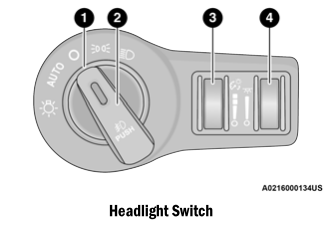Dodge Charger: Tires — General Information / Tire Pressures For High Speed Operation
The manufacturer advocates driving at safe speeds and within posted speed limits. Where speed limits or conditions are such that the vehicle can be driven at high speeds, maintaining correct tire inflation pressure is very important. Increased tire pressure and reduced vehicle loading may be required for high-speed vehicle operation. Refer to an authorized tire dealer or original equipment vehicle dealer for recommended safe operating speeds, loading and cold tire inflation pressures.
WARNING!
High speed driving with your vehicle under maximum load is dangerous. The added strain on your tires could cause them to fail. You could have a serious collision. Do not drive a vehicle loaded to the maximum capacity at continuous speeds above 75 mph (120 km/h).
 Tire Inflation Pressures
Tire Inflation Pressures
The proper cold tire inflation pressure is listed on the driver's side B-pillar
or rear edge of the driver's side door.
At least once a month:
Check and adjust tire pressure with a good quality pocket-type pressure
gauge...
 Radial Ply Tires
Radial Ply Tires
WARNING!
Combining radial ply tires with other types of tires on your vehicle will
cause your vehicle to handle poorly. The instability could cause a collision...
Other information:
Dodge Charger 2011-2025 Owner's Manual: Gauges
When selected, this screen displays the following values: Oil TemperatureShows the actual oil temperature. Oil PressureShows the actual oil pressure. Coolant TemperatureShows the actual coolant temperature. Battery VoltageShows actual battery voltage...
Dodge Charger 2011-2025 Owner's Manual: Location And Controls
The instrument cluster display features an interactive display which is located in the instrument cluster. This system conveniently allows the driver to select a variety of useful information by pushing the arrow buttons located on the left side of the steering wheel...
Categories
- Manuals Home
- Dodge Charger Owners Manual
- Dodge Charger Service Manual
- Headlight Switch
- Sport Mode
- Power Adjustment (Front Seats) — If Equipped
- New on site
- Most important about car
Headlight Switch
The headlight switch is located on the left side of the instrument panel. This switch controls the operation of the headlights, parking lights, instrument panel lights, and fog lights (if equipped).

